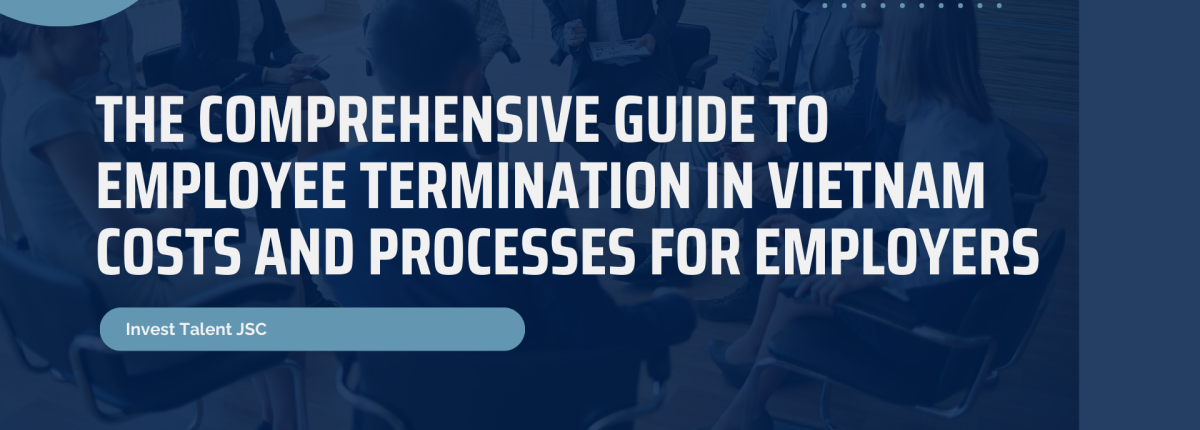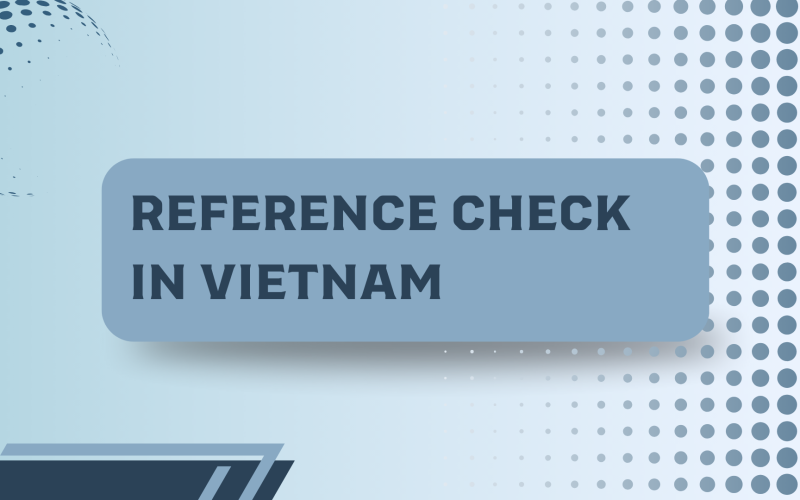The Comprehensive Guide to Employee Termination in Vietnam: Costs and Processes for Employers
Navigating the complexities of employee termination is a crucial aspect of human resource management for any business operating in Vietnam. Ensuring compliance with Vietnamese labor laws is not only essential to avoid legal repercussions but also vital for maintaining a positive employer brand. This comprehensive guide will walk you through the costs and processes involved in lawfully terminating an employee in Vietnam.
Understanding the Grounds for Employee Termination in Vietnam
Vietnamese labor law outlines specific grounds under which an employer can legally terminate an employment contract. These generally fall into two categories:
- Lawful Termination by the Employer: This includes situations where the employer has valid legal reasons to end the employment relationship. These reasons are clearly defined in the Labor Code and typically involve:
- Economic Restructuring or Technological Changes: If the employer needs to reduce the workforce due to significant changes in the business structure, technology, or production processes.
- Business Merger, Consolidation, or Division: In cases of company restructuring that necessitate workforce adjustments.
- Employee Incapacity: When an employee is physically or mentally incapable of performing the agreed-upon work, as certified by a competent health assessment organization. Specific procedures and timelines apply here.
- Employee Misconduct: This includes breaches of labor discipline as stipulated in the company's internal labor regulations, such as theft, fraud, disclosure of business secrets, or causing serious damage to the employer's assets. The severity and frequency of the misconduct are usually considered.
- Force Majeure or Other Objective Reasons: In extraordinary circumstances like natural disasters, fires, or epidemics that directly affect the business operations and necessitate a reduction in the workforce.
- Expiration of a Fixed-Term Contract: Unless the contract is extended or a new contract is signed.
- Employee's Failure to Return to Work After Expiry of Leave: Without a valid reason.
- Termination by the Employee: While this post focuses on employer-initiated termination, it's important to note that employees also have the right to terminate their contracts under specific conditions, such as:
- Not being assigned the work or workplace as agreed in the labor contract.
- Not being paid fully or on time.
- Being maltreated, subject to forced labor, or sexual harassment.
- Being pregnant and needing to cease work as advised by a health organization.
- Illness or accident that has lasted for a specified period.
The Step-by-Step Process of Lawful Employee Termination
Adhering to the correct procedures is paramount to ensure a legally sound termination process. Here's a general outline of the steps involved:
- Identify the Legal Ground for Termination: Clearly determine the specific reason for termination that aligns with the provisions of the Labor Code. Document all supporting evidence. For instance, in cases of misconduct, gather written warnings or records of the violation. For incapacity, obtain the necessary medical certifications.
- Provide Notice of Termination: The employer is legally obligated to provide the employee with a written notice of termination within a specific timeframe, depending on the type of contract and the reason for termination.
- Indefinite-Term Contracts: At least 45 days' advance written notice is generally required.
- Fixed-Term Contracts (12-36 months): At least 30 days' advance written notice.
- Fixed-Term Contracts (Under 12 months): At least 3 working days' advance written notice.
- Termination due to misconduct: The notice period may be waived, but the disciplinary process must be followed.
- Consult with Relevant Parties (If Applicable): In cases of collective redundancies due to economic restructuring, technological changes, or business mergers, the employer is required to consult with the representative labor organization at the grassroots level (if any) and notify the provincial-level labor authority.
- Issue the Termination Decision: A formal written decision on termination must be issued to the employee. This document should clearly state the reason for termination, the effective date of termination, and details regarding final payment and other relevant information.
- Settle Final Payments: The employer is obligated to pay the employee all outstanding wages, allowances, and other benefits up to the date of termination. This includes salary for the days worked, any accrued but unused annual leave, and severance allowance (if applicable).
- Severance Allowance (Trợ Cấp Thôi Việc): This is a crucial aspect of termination costs. According to the Labor Code, employees who have worked continuously for 12 months or more are entitled to a severance allowance upon lawful termination (excluding cases of employee misconduct). The severance allowance is calculated as half a month's average salary for each year of service. The average salary is typically based on the 6 months preceding the termination.
- Unemployment Insurance Procedures: The employer must complete and provide the necessary documentation to the employee to facilitate their claim for unemployment benefits from the social insurance agency.
- Return of Company Assets: Ensure the employee returns all company property, such as laptops, mobile phones, and identification badges.
- Update Labor Records: The employer must update their internal labor records and notify the relevant labor authorities about the termination.
The Costs Associated with Employee Termination in Vietnam
Terminating an employee in Vietnam involves several potential costs that employers need to factor into their financial planning:
- Severance Allowance (Trợ Cấp Thôi Việc): As mentioned above, this is a significant cost for employees with longer tenures. For example, an employee with 5 years of service and an average monthly salary of VND 20,000,000 would be entitled to a severance allowance of VND 50,000,000 (5 years * 0.5 * VND 20,000,000).
- Outstanding Wages and Benefits: This includes any unpaid salary, bonuses, allowances, and accrued annual leave.
- Notice Period Compensation (in lieu of notice): If the employer fails to provide the required advance notice, they may be required to compensate the employee for the salary they would have earned during the notice period.
- Legal and Administrative Costs: If the termination process becomes contentious and leads to legal disputes, the employer may incur legal fees and administrative costs.
- Recruitment and Training Costs: Replacing a terminated employee involves costs associated with recruitment, interviewing, hiring, and training a new staff member.
- Potential Impact on Employer Brand: Mishandling terminations can negatively impact the company's reputation, making it harder to attract and retain talent in the future.
Key Considerations for Employers
- Internal Labor Regulations: Having well-defined and legally compliant internal labor regulations is crucial for managing employee conduct and disciplinary procedures.
- Documentation: Maintaining thorough and accurate records of employee performance, disciplinary actions, and termination-related communication is essential for legal compliance.
- Communication: Communicating the reasons for termination clearly and respectfully with the employee is vital for maintaining a professional relationship and minimizing potential disputes.
- Legal Counsel: When dealing with complex termination cases, especially those involving misconduct or collective redundancies, seeking advice from experienced legal counsel is highly recommended.
Conclusion
Terminating an employee in Vietnam requires a thorough understanding of the legal framework, adherence to due process, and careful consideration of the associated costs. By following the correct procedures and fulfilling their obligations, employers can ensure a smooth and legally compliant termination process while mitigating potential risks and protecting their business interests. Being proactive, well-informed, and seeking professional guidance when needed are key to navigating this important aspect of employment law in Vietnam.













